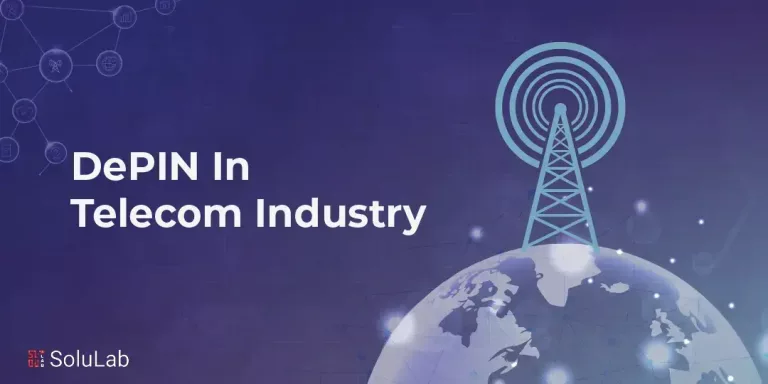
In most of our blogs, we talk to you about various upcoming technologies and their interesting applications. In today’s blog, we’re looking to bust some myths.
With blockchain trending in most circles, talks are on. The downside, though, is that the only information doing the rounds about blockchain and cryptocurrency is not factually consistent- or relevant- information that adds positive value to discourse. A lot of ‘facts’ you hear about it aren’t actually facts, rather, half-true, misinformed statements or conjectures.
Here are some of the many myths about blockchain you might have been exposed to and believed at some point, and let’s see if we can change that for you!
1. Blockchain means cryptocurrency
The reason this opinion became a significant myth is probably the fact that bitcoin and blockchain became famous around the same time. But are they the same thing? Absolutely not.
While bitcoin is the virtual currency that allows transactions to take place, blockchain is the underlying distributed ledger technology that enables it to happen in the first place, and that is just one of its many different purposes. Let’s look at both separately. Bitcoin is a form of virtual currency or cryptocurrency- a currency that doesn’t exist anywhere in the form of notes or coins or gold or silver. It is an invisible, digital value that is generated through mathematical algorithms and stored in the form of computer code in cryptocurrency wallets. Transactions happen from wallet to wallet for value to circulate. And how are these transactions secured and stored? This is where blockchain comes into the picture. Blockchain helps in generating public and private keys – like email addresses and passwords – using labyrinthine encryption that cannot be done backwards and storing and time-stamping every bit of exchange that happens on it. But what is blockchain?
Blockchain is currently the most famous distributed ledger technology out there. A distributive ledger is basically like a record book that stores data. The word ‘distributive’ means it is distributed over systems rather than being consolidated on a single computer, and that is exactly how blockchain works. Once the authenticity of a transaction is established, it is put, amongst other authenticated transactions, on a ‘block’. The block is given a ‘hash’ or a title, is time-stamped and added to the ‘chain.’ Once this is done, the information stored can never be changed; in other words, it is immutable. The time stamping ensures the order of the blocks cannot be manipulated. The rigorous encryption involved in generating the hash ensures the block’s data cannot be manipulated. Hence, it is very difficult to hack systems where blockchain is in action. Even if hacking does happen on a system, the hacker would have to make the same exact manipulations on every single system using that blockchain which would be practically impossible. This makes any attempted malicious activity quite easily trackable.
2. Blockchain can only be used in the financial sector
As we discussed above, finance was the first sector that was popularised along with blockchain, since blockchain basically enabled digital bitcoin transactions in the first place, and other applications it has in the finance sector are vast.
Goldman Sachs, the world’s leading investment, banking and security group acknowledged the importance of blockchain and largely encouraged banks all over the world to do the same and integrate it with their functioning. Another feature that couldn’t have been imagined before is the concept of smart contracts or self-executing contracts upon fulfilment of predetermined conditions that has helped a large number of people in insurance, copyrighting, theft protection, etc. But none of these applications, by any means, suggests that application in the finance sector is the only application blockchain has. The Massachusetts Institute of Technology put it into good words- they say blockchain is a General Purpose Technology (GPT). A technology that 1. can be applied across a wide spectrum of industries 2. has the capacity for continual improvement and 3. acts as a catalyst for innovation with complementary technologies.
Blockchain has revolutionised the medical industry in various countries, where patient records and trial details are now being stored on the blockchain, making them transparent to users and non-hackable to perpetrators. Most hospitals use it for record keeping. The Beth Israel Deaconess Medical Centre is one such example; they have been combining AI and research successfully for years.
The fresh produce industry in various parts of the world has shaken hands with blockchain to implement sales and purchases and to maintain a stage-wise record of whatever supplies they send out. This helps in an easy location of a loophole as it happens and increases consumer trust as status updates happen on their systems in real time.
Blockchain social media has led to the birth of decentralised social media or social media where data and power are not concentrated into the hands of one giant (like Instagram or Facebook) but distributed amongst the entire community of users. What this means is that no one authority has all of your private data that it can easily sell to Netflix or Amazon, hence privacy increases significantly. Freedom of speech and expression has also been given a new form altogether since anonymity, if chosen, is not compromised.
Internet of Things (IoT) or the new age phenomenon where our washing machine self-orders detergent every time it is running out and our coffee makers wake us up has also been facilitated in ways by blockchain. A byproduct of people’s fridges and doors having IP addresses is that the number of hackable devices in a house becomes ten times of what it was before. Device spoofing, cyber threat and IoT botnets (a group of hacked devices) leading to mining of cryptocurrency and fluctuation in its value is a real threat. This threat can be evaded to some extent with the use of blockchain. If tiny, blockchain compatible chips are installed in these devices, they can be given immutable identities of their own, making hacking into them nearly impossible. And this identity provision is not limited to IoT devices, giving digital identity and proof-of-existence to people has also been rendered a much more secure and transparent process.
3. Blockchain smart contracts have the same legal value as regular contracts
While smart contracts are becoming increasingly popular and have high utility in industries such as insurance, copywriting, theft protection and IoT systems like self-ordering from the grocery store refrigerators, their legal status is a grey area. Smart contracts are still seen as lines of code that are implemented when some conditions are met, but if challenged and contested in a court of law, payments such made have the possibility of being reversed. The benefit of the doubt may be given to the other party by virtue of the bliss of ignorance. This is largely due to the novel nature of the technology and people’s subsequent apprehension.
However, smart contracts can still prove as excellent proof that the said conditions have been met and continue to be a powerful tool, perhaps enough to negate the benefit of the doubt.
4. Blockchain is used for nefarious purposes
This stems from a similar apprehension to new technology we discussed above. Because so many people are not familiar with the way distributed ledger technologies work, it is easier to assume that it is something shady that people who have things to hide use than to actually find out what it is; once you do, you realise it is quite the opposite of that.
Cryptocurrency on blockchain, with everything on a digital system with immutable records, is far more traceable than physical cash. Blockchain has in fact been used by governmental agencies for their forensic analysis to crack down on illegal activities such as drug exchange and money laundering.
5. All Blockchains are the same
This results from a very reductive outlook towards blockchain.
There are various technologies that contribute to the blockchain. There’s the ledger, peer-to-peer network, consensus and incentive mechanisms are some of the core components. If anyone of them is changed slightly, the resulting blockchain would be very different.
This anyway makes no sense considering the vast number of applications blockchain has. How can the blockchain maintaining patient records be exactly the same as the blockchain regulating the tuna market? One size doesn’t fit all, in the same way, different applications call for different blockchains. Some are private, some are semi-private and the others, wholly public. Like this, there are various other modifications and differences.
6. Blockchain is free and highly accessible
There are no free lunches in the world- and a technology that performs such heavy mathematical functions and implements algorithms certainly comes at a cost. Somebody is paying for a large amount of computing power, and the cost is in some form, eventually falling upon the consumer. Of course, the choice then is whether or not to make the tradeoff, because the benefits are also proportionate, if not greater, than the cost.
As far as accessibility is concerned, that is something developers are still working on. The largest barrier towards this goal is the scalability of blockchain. The immutable chips need to be made as compact as possible, as data efficient as possible without compromising on security. Otherwise, imagining larger blockchain integration is difficult.
7. Blockchain can never be hacked or altered
Blockchain is nearly impossible to hack- the emphasis here is on nearly. While it is true that a DLT has massive upsides in terms of security as compared to centralised systems, that doesn’t make it impossible for their security to ever be compromised.
The feature that makes blockchain so secure is the high level of encryption. That fact that the private key cannot be obtained from the public key, has cannot be manipulated and the chain is basically safe and immutable depends on the fact that the mathematical operations are too complex and for all practical purposes, irreversible. However, with the development of quantum computers, this might be put under question. Quantum computers are computers that have infinite states between 1 and 0 in contrast with just the two states in regular computers. They can exist, through quantum entanglement of states, in infinite forms at the same time. What this leads to is an unprecedented increase in the efficiency of these computers and their ability to perform operations. Right now, quantum computers are not very accessible as there are massive scalability issues. They are limited to theoretical and some practical physics’ labs. But if this technology becomes more easily available, how safe blockchain is will be replaced by a question mark. However, it is reasonable to assume 1. this is not likely to happen any time soon and 2. blockchain technology will also evolve accordingly, as everything does with time and innovation.
So, even though blockchain is not one hundred per cent hack-proof, the truth is, no system or database can ever completely be. It is sort of an unrealistic goal. So, when compared to all other systems available, blockchain still definitely has the edge and is the least hackable of all. It is also one of the few technologies that actually give a fallback mechanism- if hacked, blockchain itself will lead you to catch the unauthorised changes.




